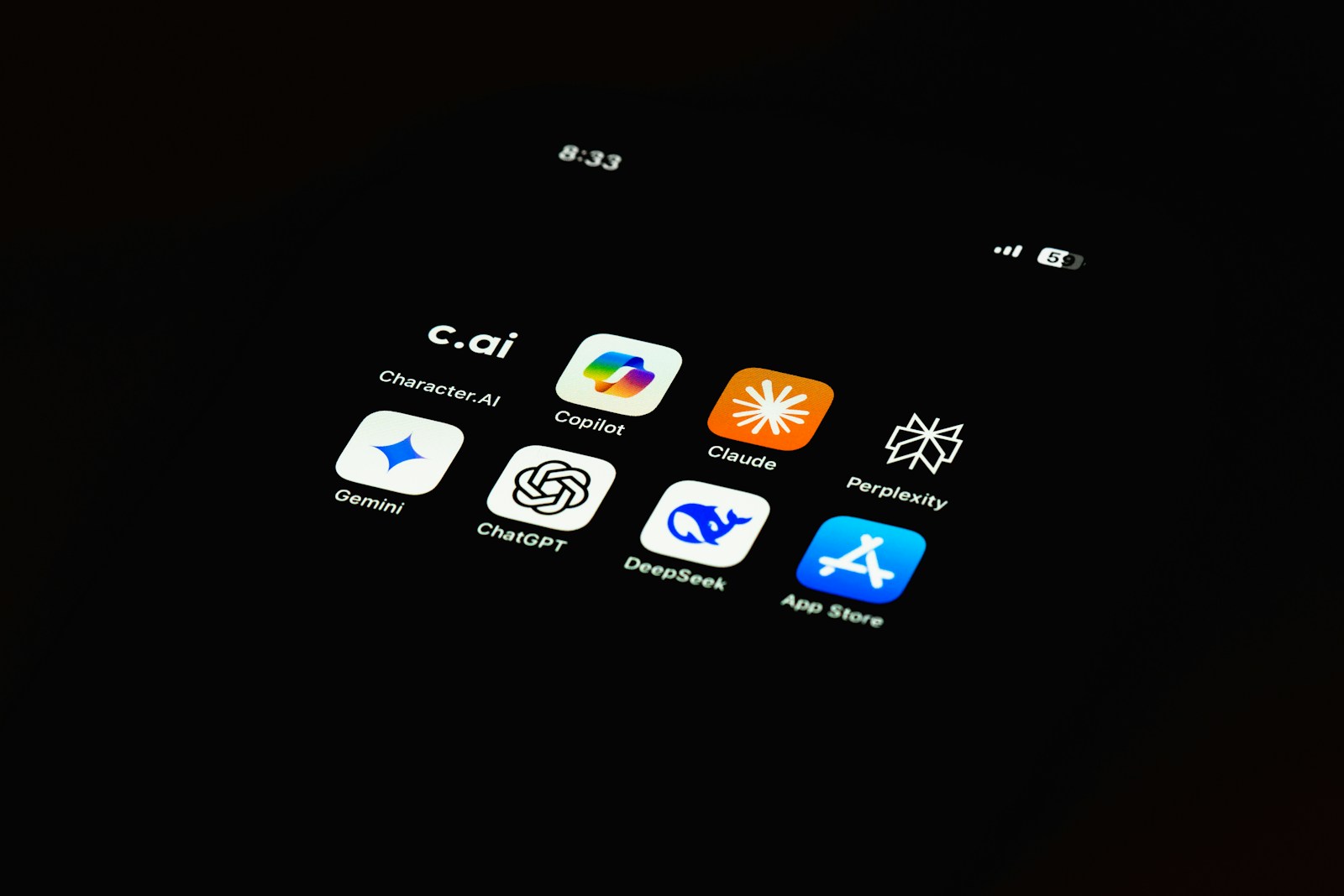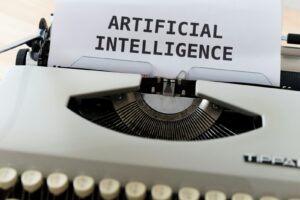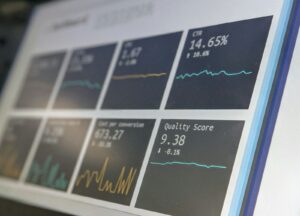Productivity is not only a need in the busy jungle of the business sector; it is a must.
We have to welcome artificial intelligence not only for entertainment but also to help to make every tiresome chore at work less demanding.
It’s like learning a better approach to enjoy your whisky.
Companies are learning creative ways to save time, increase efficiency, and maybe even find a moment to relax with automation.
Two recent friends in town are natural language processing and machine learning.
Think of boring processes, cost-cutting initiatives, and helping with those heavy ideas we call decision-making—they automate the mundane.
Companies who ride this AI train may increase their output by up to 20%. That’s like discovering an extra doughnut in the package.
Imagine arranging meetings with a virtual assistant that never complains, cleverly sorts your emails, or lets algorithms handle data entry with more elegance than a cat meme.
Let’s explore how artificial intelligence transforms the ordinary into the spectacular and frezes people to strategies while the robot does the labour.
Our tech friend’s friendly boost can help with daily chores as follows:
- Routine Administrative Tasks: Automating your email and scheduling chores will free up a shockingly thirty percent of your time. Those are the hours you could spend honing your coffee-making techniques on more crucial tasks.
- Simplified Transmission of Information: Consider this Faster than your friend who has had too many, artificial intelligence chatbots can respond. While virtual meeting assistants transcribe conversations, they answer questions and nail the follow-ups as you try to recall where your coffee vanished to.
- Effective Data Management: Celebrate the optical character recognition OCR magic. It can half the times for data processing. Accuracy suddenly improves significantly, and you start to wonder why you ever bothered doing it the laborious way.
Go methodically to have this powerhouse operational in your company.
Find the chores that demand automation; search for the appropriate tools; perhaps begin with a pilot program and then, with a flash of brilliance, scale it.
Using seminars and guaranteeing support will help your team to feel strong enough to command the artificial intelligence like professionals.
There are countless opportunities in the future; predictive analytics will smooth out decision-making more than a jazz saxophonist, and machine learning will bend to our will faster than we can hit “Send.”
Using artificial intelligence for automation is not only a smart decision but also a revolutionary action that will lead your business to lead the innovation parade in this insane environment of business.
The road to productivity begins now—opening doors to effectiveness and creativity that will alter our collective path.
Realizing AI’s Place in Workplace Automation
Artificial intelligence (AI) has firmly established itself in our offices and drastically changed how we go about daily responsibilities.
It includes programs that can replicate human intelligence by learning, reasoning, and acting autonomously, so improving decision-making processes.
Modern companies aiming at efficiency and productivity depend on understanding artificial intelligence.
From healthcare to finance, its uses in automation cover many sectors and help companies to address repetitive tasks and allocate human resources towards more strategic projects.
By means of data analysis, pattern recognition, and prediction generation grounded on processed data, artificial intelligence functions.
A subset of artificial intelligence, machine learning lets algorithms grow from data and steadily increase their performance.
Training data sets allow the artificial intelligence to find trends and insights perhaps missed by human eyes.
Strong algorithms combined with enormous volumes of data create a dramatic change in operational capabilities, thus AI takes front stage in workplace innovation.
Describe artificial intelligence and its applications
In computer science, artificial intelligence is the study of building systems able to execute jobs usually requiring human intelligence.
This covers speech, comprehension of natural language, decision-making, and visual perception.
- Components of artificial intelligence:
- Machine learning, or ML, is the continuous improvement process of algorithms learnt from data.
- Natural language processing (NLP) helps machines to grasp and react to human language.
- Computer vision lets computers decipher visual data from the environment.
Using neural networks—which are meant to replicate human thought and information processing—one of the basic ways artificial intelligence learns.
AI interprets data essentially using a vast array of linked nodes akin to those of a human brain.
Companies like Google, for example, have put AI-driven models into use that remarkably precisely forecast search trends depending on user behavior.
Main advantages of using artificial intelligence for daily chores
There are several different and great benefits of including artificial intelligence into regular job responsibilities.
Here are some main advantages companies could get:
- AI can help team members concentrate on higher-level decision-making and creative problem-solving by automating routine tasks.
- Reducing human labour for repetitive chores helps companies save a lot of running expenses.
- Particularly helpful in data-heavy environments, artificial intelligence algorithms remove human error and produce exact and consistent findings.
- AI can compile and evaluate sophisticated data sets, providing insights that help to rapidly make well-informed decisions.
Recent McKinsey research shows that businesses using artificial intelligence in their operations experienced a 20% productivity rise, so underscoring the transforming ability of AI tools in performance optimization.
Typical Mistakes Regarding Artificial Intelligence in the Office
Though its benefits abound, artificial intelligence’s acceptance in the workplace may be hampered by misunderstandings. Following are some common misconceptions:
- Although many people worry about job loss brought on by artificial intelligence, AI is more likely to increase human capacity than to totally replace human ability. By assigning regular chores to artificial intelligence, employees can focus more on more important work.
- Some people say artificial intelligence is flawless and error-free. Like any technology, artificial intelligence, however, depends on the caliber of the data it handles. Bad data can produce erroneous results.
- Many businesses believe that implementing artificial intelligence calls for large resources and knowledge, which is overly complicated. Actually, there are easily available user-friendly tools and platforms requiring little technical knowledge.
Clearing these misunderstandings will help companies create a culture more open to creativity.
Classifying Daily Activities to Automate
Maximizing the advantages of artificial intelligence depends on knowing which jobs inside the company fit for automation.
Although some daily operations would much benefit from automation, not all activities are perfect candidates for it; hence, general workflow efficiency is enhanced.
Businesses can greatly increase output and focus human efforts on areas of most value by carefully choosing chores to automate.
Typical Administrative Jobs You Could Outsource to Artificial Intelligence
Administrative chores sometimes take up valuable staff time better used for strategic projects. Especially suited to simplify these chores is artificial intelligence.
Typical administrative tasks suitable for automation consist in:
- AI-powered virtual assistants like Clara and x.ai can automatically manage calendars, set reminders, and schedule meetings free from human involvement.
- Email management tools like SaneBox let staff members concentrate on the most important communications by sorting emails depending on priority and classifying them.
- Tools like DocuSign or Adobe Sign streamline the document signing and storage process, so guaranteeing organized and easily available documentation.
Companies using AI-driven administrative tools show up to a 30% decrease in time spent on routine tasks, freeing up valuable hours for creative projects needing more than just transactional inputs.
Simplifying Communication with AI Tools
Many times, workplace communication is messy and ineffective.
Through more efficient channels of communication, artificial intelligence tools are altering this. Here’s how artificial intelligence might improve office conversation:
- Chatbots: Common questions can be answered instantly by tools like Drift and Intercom, so giving employees and clients both fast answers. Better customer service experiences and less strain on human employees follow from this.
- AI-powered apps like Otter.ai can record meetings, offering succinct summaries and key takeaways without calling for a dedicated note-taker, so simplifying post-meeting follow-up.
Improved interactions have reportedly raised employee satisfaction by 25% in businesses using artificial intelligence communication tools.
An instantaneous response time and anonymity in questions improve the whole working experience.
Data Entry and Management Automation:
Data entry is a perfect candidate for automation since it is so prone to error and so tire singly difficult.
Artificial intelligence helps companies to accurately and quickly handle these chores. Here is the approach:
- Optical Character Recognition OCR: Manual entry is eliminated by software like ABBYY FineReader, which converts scanned documents and images into editable formats.
- Microsoft Power Automate and other tools automatically compile data from many sources into useable formats without human involvement.
A study by AIIM found that companies using artificial intelligence for data entry chores reported a startling 50% drop in processing time along with a notable rise in data accuracy.
Popular artificial intelligence tools for workplace automation
Companies wishing to implement artificial intelligence-based automation have a wide range of tools meant to streamline and improve workplace output.
Every tool has particular purposes, which makes customized automation solutions fit for the particular requirements of a company possible.
Microsoft Power Automate: Easily creating processes
Strong tool meant to enable the automation of processes among several applications is Microsoft Power Automate. This platform especially helps since:
- Drag-and-drop capabilities of the user-friendly interface let people with low technical knowledge design processes to effortlessly automate regular tasks.
- Integration Capability: It lets a coherent workflow by seamlessly interacting with other Microsoft applications as well as outside services.
Using Power Automate, companies have found that users can effectively automate repetitive tasks including data collecting, notifications, and reminders, so saving up to a 60% decrease in time spent on manual processes.
Zapier: Effortlessly Connecting Your Favorite Apps
Small to medium-sized businesses (SMEs) looking to increase output by combining several applications find Zapier to be absolutely essential. Important characteristics include:
- Users of multi-step automation can design sophisticated processes linking up to 1,500 applications, handling varied tasks without much knowledge of coding.
- Zapier offers a range of pre-built automations to let companies quickly adopt and modify successful ideas.
According to statistics, Zapier users increase their productivity by thirty percent once they start using the tool since it helps to save time spent on tedious chores among several applications.
Trello Automations: Improves Project Management
Trello’s visual project management tools are well known, and Butler—its automation tool—adds still another level of utility. Butler lets individuals:
- Users of automated task creation can set rules for task generations depending on triggers, such card movement to a designated list.
- Users can design customized commands to simplify repeated tasks, so improving the flow of project management.
Teams using Trello Automations reported a 40% increase in project completion speed while either maintaining or improving quality, according a survey by Trello.
Including AI into Your Process
Including artificial intelligence into daily activities of your company calls for a well-defined plan.
Using the correct strategy, artificial intelligence integration can greatly improve operational effectiveness and output.
These are ordered actions for successful application.
How to apply artificial intelligence solutions in your company?
Depending on how well AI solutions are implemented, they can either be a disruptive or smooth change.
Think on the following actions to guarantee a seamless integration:
- Determine and record the particular chores or operations needing automation.
- Investigate several artificial intelligence tools that can meet your needs for automation, with an eye towards user reviews and performance statistics.
- Starting with a small-scale pilot of the selected artificial intelligence tool, assess its impact and make required changes before more general release.
- Once shown to be successful, progressively extend the application of artificial intelligence solutions among other departments and teams.
According to a Deloitte research, companies using a methodical approach to artificial intelligence deployment observed a 35% increase in successful project completion over those using a trial-and-error approach.
Teaching staff members to apply artificial intelligence effectively
Adoption of artificial intelligence depends critically on training.
Workers have to be able to properly apply new tools to maximise their possibilities. Techniques for bolstering instruction include:
- Workshops and seminars let staff members investigate tools and ask questions in a conducive environment hands-on.
- Provide easily available documentation, instructional videos, and FAQs to enable staff members to independently negotiate artificial intelligence tools.
- Establish a system of ongoing support that lets staff members ask for help as needed, so promoting a culture of candid learning.
Studies reveal that businesses who make staff training investments almost see a 50% increase in user engagement and general output.
Calculating Results: How can one assess how artificial intelligence affects output?
Companies have to routinely assess their impact if they are to determine how well AI solutions work.
One can evaluate the outcomes using key performance indicators, KPIs. Think about tracking:
- Track the hours saved using automated systems instead of hand ones to evaluate effectiveness increases.
- Measure the accuracy and quality of work done by artificial intelligence against that of humans.
- Surveys will help you to better grasp employee experiences and degrees of satisfaction following artificial intelligence deployment.
PwC’s research shows that companies who actively track AI impact typically show a 20–30% increase in productivity measures, so highlighting the need of data-driven evaluations.
Overcoming Obstacles in AI Adoption
Even if embracing artificial intelligence clearly has advantages, companies sometimes encounter challenges all through the process.
Ensuring a successful change depends on confronting these difficulties head-on.
Identifying issues and aggressively putting plans into action help to minimize possible disturbances.
Respecting Issues Regarding Employment Displacement
The worry of job loss is among the main obstacles to artificial intelligence acceptance.
Although artificial intelligence can complete some tasks more quickly than humans, it’s important to underline that automation can cause roles to change rather than total eradication.
- Companies can make investments in training courses that equip employees for increasingly difficult tasks needing human dexterity, critical thinking, and emotional intelligence.
- AI often results in new job roles targeted on strategy, data analysis, and oversight, so giving employees opportunity to participate in meaningful work.
Data indicates that 55% of executives think artificial intelligence will generate net new jobs in their companies, so supporting their view that automation improves rather than reduces employment opportunities.
Maintaining Privacy and Data Security
As artificial intelligence grows so does the risk of privacy issues and data security breaches.
Maintaining privacy standards and safeguarding private data must be top priorities for companies so as to build confidence in their employees and customer base. Important factors comprise:
- Make sure every AI tool and method follows required compliance criteria, such GDPR or HIPAA.
- Frequent evaluation and audits of artificial intelligence systems help to identify possible weaknesses, so safeguarding private data.
Reflecting the extreme need for sufficient data protection, a study by Cybersecurity Ventures estimates global spending on cybersecurity will surpass $1 trillion from 2017 to 2021.
Managing Resistance to Change in the Workplace
Especially in established companies, change sometimes runs against opposition.
To foster a culture receptive to change, focus on the following strategies:
- Open Communication: Clearly communicate the reasons behind AI adoption and how it will positively impact both individuals and teams.
- Early on in the AI integration process, involve staff members so they may offer feedback and start change agents.
- Share case studies or testimonies from other companies or teams showing the advantages of an artificial intelligence change of direction.
Studies indicate that organizations with effective change management practices are 70% more likely to see successful transformations.
Future Trends in AI and Workplace Automation
As AI technology evolves, it will undoubtedly shape the future of workplace automation in profound ways.
Predictive analytics’ ascent in task automation
Predictive analytics harnesses the power of data and AI algorithms to forecast future outcomes based on historical data.
This capacity can change the way decisions are made, so turning them from reactive to proactive.
- Applications in Business: Predictive analytics can be used for inventory management, supply chain optimization, and even customer behavior analysis.
- Data-Driven Insights: By leveraging predictive analytics, businesses can optimize resource allocation, ensuring they meet future demands efficiently.
Predictive analytics is expected by Gartner to be used by 50% of companies by 2025, so highlighting its growing relevance in strategic planning.
How Machine Learning is Changing the Game
Machine learning keeps transforming office automation.
It enables systems to learn and adapt independently over time, leading to more sophisticated automation solutions.
- Enhanced Personalization: Machine learning algorithms can offer personalized experiences for customers and employees alike, improving engagement and satisfaction.
- As algorithms develop, they will address challenging problems requiring sophisticated knowledge, so stretching the limits of what automation can accomplish.
AI’s Part in Establishing a More Flexible Work Environment
The shift to flexible work arrangements fueled by AI tools is changing how companies operate.
AI enables businesses to maintain efficiency while allowing employees to work remotely or around their schedules, ultimately enhancing work-life balance.
- Tools supported by artificial intelligence like Slack and Zoom enable seamless communication, so enabling teams to collaborate successfully wherever.
- Adaptive Workflows: AI optimizes workflows in real-time, adjusting tasks and priorities based on changing business conditions.
A recent Gallup poll indicated that 54% of workers prefer to work remotely at least part-time, highlighting the demand for flexible work solutions that AI can provide.
Including artificial intelligence into your office goes beyond only technological considerations. It’s about transforming how we work together.
Final Notes
As we draw our exploration of maximizing productivity through AI to a close, it’s clear that embracing these innovations can dramatically reshape our daily work lives.
Integrating artificial intelligence appeals not only for its capacity to automate menial tasks but also for the chance for us to concentrate more on strategic projects.
This synergy of man and machine fosters an environment conducive to creativity, collaboration, and advancement.
Studies show that companies using artificial intelligence (AI) see a notable rise in output—a startling 20% according to McKinsey.
This speaks to the profound impact of leveraging technology to free up human potential.
Furthermore clear is AI’s adaptability for a variety of tasks, from administrative chores to communication optimisation.
By adopting AI tools, businesses are not merely looking at automation, they are investing in intelligence that yields improved decision-making and accuracy.
Consider the fact that companies using AI-driven solutions report up to 30% reduction in time spent on routine tasks.
Such empowerment of staff changes the workplace and makes it not only more efficient but also more fulfilling for the employees.
We should demystify the misunderstandings that sometimes cloud the acceptance of artificial intelligence.
Fears of job displacement, underestimation of implementation complexity, and the notion of AI as infallible can hinder progress.
Organisations can remove these obstacles by adopting an adaptive approach, so ensuring that staff members are upskilled and constantly interacting with the technology instead of underused by it.
As trends in predictive analytics and machine learning grow, our workplaces will become more nimble, adapting in real-time to the changing demands and enhancing the work-life balance.
Not only is embracing this new frontier helpful, but any company trying to stay competitive has to do so.
As we step into this era of workplace automation, the invitation is clear: let’s harness AI to amplify our capabilities and create a more innovative, fulfilling work environment for all.
Frequently Asked Questions
What is artificial intelligence, and why should office automation benefit from it?
Artificial intelligence, or AI, replics human intelligence to handle chores including decision-making and speech recognition.
Its importance in workplace automation lies in its ability to increase efficiency, reduce errors, and enhance decision-making processes, allowing organizations to focus on strategic initiatives.
How might companies find jobs fit for artificial intelligence automation?
Businesses should evaluate daily operations and pinpoint repetitive tasks that consume time and resources.
Good candidates for automation are tasks including data entry, email management, and scheduling since they will help staff members to focus on more important work and improve workflow efficiency.
What are some popular AI tools for automating everyday tasks?
Numerous artificial intelligence applications are meant for use in offices.
Notable examples include Microsoft Power Automate for workflow creation, Zapier for connecting various apps seamlessly, and Trello Automations for efficient project management.
How might artificial intelligence enhance corporate communication?
AI enhances workplace communication through tools like chatbots, which handle common inquiries quickly, and virtual meeting assistants, which transcribe discussions for efficient follow-ups.
Smoother interactions and higher employee satisfaction follow from this.
What training is required to implement AI solutions effectively?
Effective acceptance of AI tools depends on appropriate training.
Companies should provide workshops, resource materials, and ongoing support to help employees become proficient in using AI technologies and to foster a culture of learning.
How might businesses gauge how artificial intelligence influences output?
Companies can assess AI’s effectiveness by monitoring key performance indicators such as time savings, output quality, and employee satisfaction.
This information enables companies to evaluate their AI integration’s success and make wise changes.
What are the common misconceptions about AI in the workplace?
Among the common misunderstandings are the ideas that artificial intelligence is flawless, will totally replace human jobs, and that its application is unduly difficult.
In reality, AI augments human capabilities, has limitations based on data quality, and user-friendly tools are readily accessible.
How might companies effectively apply artificial intelligence?
To implement AI effectively, organizations should identify their automation needs, research applicable tools, conduct pilot programs to evaluate solutions, and then scale up based on successful outcomes.
Structured methods improve general performance.
How can organizations address concerns about job displacement?
Companies should stress that artificial intelligence can generate new roles and provide reskilling chances to help overcome worries about job loss.
By letting workers concentrate on more difficult tasks, automation can improve rather than reduce employment prospects.
What future trends should businesses watch for in AI and workplace automation?
Companies should monitor developments in machine learning, which are enhancing automation capabilities, and predictive analytics, which can help to improve decision-making.
The rise of flexible work environments supported by AI tools suggests a future where work-life balance is achievable.








